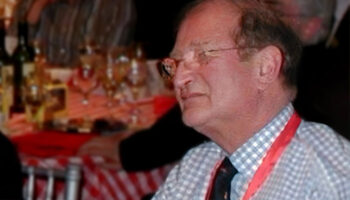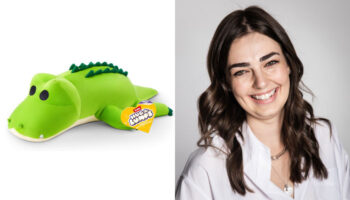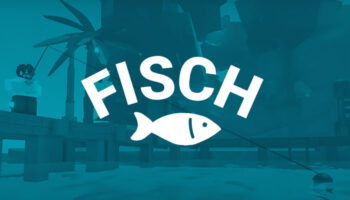Industry favourite David Berko discusses his long career… And the advice Tom Kremer gave him early on!

David, welcome! Just before I hit record, you were saying you used to interview candidates coming into the industry… When you wanted to see how passionate they were about toys, you’d ask them about their favourite toys and games. Seems like a good place to start! What were yours growing up?
Things were a little different when I was growing up! Back in those days, you’d go out early and play until the streetlights came on. Then you’d come home! But I had a Davy Crockett hat – a raccoon cap – and I had a gun, like a little pistol… When you pulled the trigger, it shot a slide; a picture on the wall.
Like a projector in a pistol?
Yeah. I loved that thing! But there weren’t that many toys; it was a different world then. Silly Putty was cool. I had roller skates. I had Lincoln Logs. And the other one – Tinkertoy. Do you know Tinkertoy?

I’m familiar with them… Construction toy with the circles and the sticks. And in terms of your career, you’ve been in toys and games for a very long time. How did you get into it?
Well… My sister knew this guy that I ended up working for; grew up in Queens. His name was Marty Abrams. He ran a company called Mego. And my sister’s boyfriend – who’s now her husband, actually – was at Toy Fair, dressing up as an ape.
Ha! Course he was!
Mego were launching Planet of the Apes figures. He was on hiatus between schools or something. Anyway, he had to go to a funeral one day and they called me. I was needing work at the time, so… I was a monkey.
YOU dressed up as the monkey?! Ha! Listen, we’ve only been talking for two minutes but we could wrap it up now and it would still be one of the best interviews I’ve ever done! And just so I’m clear, where was this?
It was in the New York toy building; in the Mego showroom – which was like a fantasy land. I’m a kid who grew up with comic books, and Mego had all these superhero figures. So it was “Wow!” After I did the monkey thing, I was also Spider-Man at stores. But by the May of that year, I got a job at Mego: I was the guy taking the monkeys around the stores.
You were the Monkey Wrangler?!
I was the Monkey Wrangler! Fortunately, that was only a small part of the job… And you know, I think we still did Spider-Man here and there in those days as well. The company made the costumes and we just went and did it. Nowadays, I don’t think a licensor would allow you to. But Marty was an amazing guy; kind of a maverick. He just did what needed to be done to sell this stuff. Anyway, I ended up with a job at Mego, originally reporting in to the sales department, which wasn’t a great fit for me. But I loved the product! I had to do presentations to, say, the Montgomery Ward people. You know Montgomery Ward?

I don’t think we had Montgomery Ward in the UK… They were a discount retailer, weren’t they?
Right. So I had to learn how to present so I could show the line to these people. I had this presentation that I’d go through, showing the new toys. I’d hold up Captain Kirk and Mr. Spock figures and show how they looked, the articulation… All that sort of thing. It was fun! For one presentation, I remember that I showed up – but the samples didn’t arrive. So I’m this 24-year-old kid, with no samples, standing in front of a group of grown men… But I remembered the presentation – so I just said, “Picture Captain Kirk and Mr. Spock at eight inches tall…” And I did this whole presentation, gesturing, with no samples – got a standing ovation!
Oh, wow! I guess they respected that…
Yeah, I guess. I mean, you had to do it. I was in sales at Mego for a little while, then they put me in kind of a liaison position between sales and Research & Development. So I was reporting into R&D because samples were an important thing – they were handmade at that time, and there were a thousand toy shows; all the European and regionals… I had to coordinate all that. But I ended up working in R&D, and started meeting toy inventors.
Do you remember your first project?
Oh… I think the first inventor I started getting to know through his first project was Mark Setteducati. He’s a great guy; terrific. He came in, did some magic tricks – he’s just charming… I think he pitched a game called Nim-Check. I couldn’t tell you how to play it now; we’re talking 1974. And you know, Deej, every gray hair is a dead brain cell!

Ha!
At that point, though, I wasn’t in inventor relations – in fact, I don’t think there were really any inventor relations positions. That was always part of someone’s job; it wasn’t a career path. Anyway, Marty would take the stuff in with a product guy called Neil Kublan, and they’d tell the development team, “Work with this guy…” or whatever. Meanwhile, I had a desk in the corner of the storeroom, my little closet, where I maintained all the inventor samples that came in; all the handmade samples and stuff. I was in charge of tracking them. Eventually, I worked on developing product. I was at Mego for seven years.
Oh, okay… Long time.
Yeah. I don’t remember the exact order of events, but I know I ended up being a product manager, learning how to develop toys. That was my graduate school, and I went to Ideal from there.
Ideal? I didn’t realize you were there as well…
Yeah. I went to Ideal when they were still in Queens. It was an old factory building and you could actually smell toys being made from the office up on the fifth or sixth floor. And at the same time, in Newark, New Jersey, there was a million-square-foot factory also making toys. So you could get in your car and go and see how it was all being done: see the drawings, the moulds, the tools; the actual machines. You didn’t have to go to the Far East to learn how this stuff was made. Of course, one day everything got shipped to the Far East anyway, but I got my education in product development from that hands-on experience.

And I imagine there’s something very inside out about that. I mean, a lot of people will never experience the whole process: these are the drawings, this is the prototype; now we’re doing this, this, and this…
Yeah. Putting your hands in plastic pellets, smelling this stuff and knowing they’re going to turn them into a toy. There’s something that I loved about all that.
I can tell! I love the passion with which you’re describing this because you’re clearly, in your mind, witnessing a real alchemy! And that brings us up to the early ’80s… Where were you next, David?
After Ideal? Well… In the ’80s, you sat in one desk and changed jobs four times. Ha! So Ideal got bought by CBS which owned Gabriel Industries, they had brands like Child Guidance at the time; Gym Dandy equipment. CBS didn’t know the toy business too well, but I remember the presentation we made to their board to sell them on Ideal. At the time, we were launching a line called Team America – you may remember that… It was an offshoot of the Evel Knievel Stunt Cycle.
Like rip-cord motorbikes?
Right. And one of the products we had – we never made it – but we called it Rip and Roar. We toned it down a bit, but the prototype was made from the winder on a lawnmower. It had some serious power! Ha! When you launched it, it sped off, went through a loop, then up a ramp. But – at the pitch – we were in an old room with a drop ceiling… I ripped the cord and this thing roared off, hurtled up the ramp and went right through the ceiling!

Ha!
It never come down. Ha! I think that was the moment they bought the company!
That would do it! Great story! Love it!
It was one of those nerve-racking weeks because we were preparing all the numbers and our jobs were on the line as well. I worked for a guy called Saul Jodel – also a great guy. He left Ideal to go to Galoob; did a lot of great things in the business. At that time, though, Saul was my boss and was supposed to do the presentation. But he got sick that day – rushed to hospital – and I ended up holding everything for the toy group. So I was a little nervous. Smoked my last cigarette that day!
Oh?
Yeah, I was trying to quit that week. If you ever want to quit smoking, do it at a time when you’re under the most pressure. I remember I had a pack of cigarettes on me. I put out my last one just before I went in the room. I carried that pack with me for a couple of weeks after that, but I didn’t smoke at all.
Just didn’t fancy one after that?
Right. And that’s 40 years ago! Anyway, we did the deal but CBS eventually decided to get out of the toy business. That was a strange situation because we were getting a line ready to present to the trade, and were suddenly told, “The company’s going to be sold.” So instead we presented the line to our competitors to sell off the company. They ended up chopping it up.
Anyway, one of the companies we presented to was Panosh Place. They bought the Cabbage Patch license for little collectibles. They didn’t do too well and I only lasted six months… Then I got a job at Matchbox US. George Volonakis was running it at that time. I ended up being a Marketing Director at Matchbox US. That was when Nick Austin and John Barbour were in the UK.
Nick Austin and John Barbour? Two more I.D.I.O.T. Award winners? You were in esteemed company!
Yeah. I still hadn’t gone to the London Toy Fair at that point, I don’t think, but Nick, John and I would have our yearly fights about which three new models we were going to do. They wanted European ones and I wanted Corvettes and things like that. So it was a great experience…

I was there for five or six years but Matchbox was having a hard time. I remember my boss at the time took me for a walk through the distribution centre; a warehouse in the New Jersey building. He warned me there was going to be a big layoff – the only two people that didn’t have to worry were the two of us. A very difficult time. When it happened, I was the last guy in the marketing department, but I found two computers on vacant desks and I said, “We’re going to have to learn how to do this!” Because at that time we were still doing line projections and stuff with pencils and paper.
Pencils, paper – and an eraser instead of a delete button! Fascinating to have been at the forefront of that.
Right. I learnt how to enter in all our sales on the computer software; put in all the cars. I knew every single one of the 75 cars inside out; which of them sold, which didn’t. This would’ve been about ’85 or ’86… It was an enlightening time for me. Unfortunately, I found myself being there too many hours, though, and eventually it got to me. After I left Matchbox, I had a short run at a company called Buddy L. They’re long gone now, but I was Vice President of Marketing. Then I went to work for Tom Kremer at Seven Towns.
Wow!
Right? I replaced a fellow named Larry Mass in the New York office – and “wow” is the right word. If Mego was my graduate school, Seven Towns was my PhD. Tom Kremer was just brilliant! He had an amazing head both for product and the business. I learned so much from him. On my first trip to the UK with Seven Towns, we went through their whole closet and there was a product that we pulled out. It was a Play-Doh item. I thought it was pretty cool – and that became the first product that I took to market. I sold it to Tyco.
So that idea had been taken into Seven Towns? Not right at the time, maybe, so just put in the closet?
Right. It might’ve been 10 years old. They couldn’t sell it. But we went through the closet and we made a list of all these things that I’d be presenting. And, oh wow! Now, you know, I’m suddenly on the other side of the fence. I mean, through the years at the other companies, I worked with inventors, but I had a job too. As I say, I don’t think there were any inventor relations roles as such; there was always just somebody who had that as part of their job…
But going into the closet at Seven Towns, I’m starting to look at things more the other side of the table. Is there a market for this? Who’d be interested in that? So I learned all about that, and a lot about negotiating. Because, you know, Tom Kremer was also a brilliant negotiator.

We’ve done an article on Tom Kremer, so I’ll put a link to that here! Where did you go after Seven Towns? Tyco?
Yeah – I’d been at Seven Towns for a few years… Then, one day, Mike Lyden was in my office in New York. He was great. He said he was looking for an inventor relations person to fill his job. He was Vice President of Business Development at Tyco, and that included inventor relations and business opportunities.
Well, at the time, I was still waiting for some royalties to flow in – and I thought that could be an opportunity. So I called Tom first and told him Mike Lyden mentioned this position at Tyco. I said, “Would you mind if I spoke to him about it?” Tom said okay. So I spoke to Mike, and eventually got the job: Vice President of Business Development at Tyco.
Your CV is unbelievable! And if you got to Tyco in – what? The early ’90s – you would’ve been there for arguably their definitive moment: Tickle Me Elmo.
Tickle Me Elmo, yes… I started in ’92; Tickle Me Elmo was ’96. That came in from Ron Dubren and Greg Hyman, but it wasn’t Elmo at first. It was Tickle Me Taz because we had the rights to some Looney Tunes stuff.
Tickle Me Taz! That’s right. And it was a chimp before that, wasn’t it? Tickles the Chimp?
Yeah, I think they brought in a monkey and someone had said, “Do it as Taz.” And I said we weren’t that interested, but why not take it to Stan Clutton at Tyco Preschool? And the rest is history because Stan bought it and said, “Why don’t we make it vibrate when it tickles?”

Stan Clutton? Jesus, David. Almost everybody in your stories has won an IDIOT Award! Is there anyone in your life that hasn’t won one?!
My family doesn’t have one…
Then I’ve got a feeling they’re on a shortlist! So, Stan Clutton – sadly – passed away some time ago…
Yeah. He was a great guy. I ended up working with Stan – in fact, he was the guy who introduced my IDIOT Award.
So Stan is the man that stood up and did the speech ahead of your award?
Right. I was working for him at the time. I don’t remember how many Inventors Dinners I’d been to at that point, but it was a few. Mike Lyden brought me to my first one… I think Torquil Norman spoke; he was the very first winner. There are usually a few previous winners there; it’s a fun event – funny, great energy… They’re always at terrific venues; there are jokes, but always this great respect for inventors.
And the year that you won, do you remember how the award came to you? Was it a surprise?
Oh, a complete surprise. Years ago, Bob Fuhrer had got an I.D.I.O.T., and we’d talked about his once. At the end of that, he said to me, “Maybe one day you’ll get it…” And I was, like, “Yeah, right!” But on the night, Stan got up and started doing this introduction. Then, part way through, it started to sound like me. And I said, “Holy shit!” – I was dumbstruck, really, because I never won anything, you know? I have it here; right over there… My grandson looks at it occasionally; it really is one of my most-prized possessions.
What are some of the others?!
Prized possessions? Well, you’ll get a kick out of this. You know what that is?
Is that a key to a locker room?
Close! It’s a key to the men’s room in the old toy building!

Ha! That’s quite a souvenir!
And this… This is a doorknob from the toy building. Bob Furher gave me that. He had an office in the toy building; the doorknobs are so amazing; beautiful.
That’s really ornate. Beautiful! Something else I wanted to ask you, David, was about your approach to finding ideas. Tell me a bit about that…
You know, when you go on a sweep to look at ideas, you see hundreds of products… Hundreds and hundreds. I remember once – I think it was at Ideal – I saw over 5,000 products in one year. And maybe 10 or 20 of them made it through. I used to say I was running an adoption agency at these companies…
An adoption agency?
Yeah. I find the right children to fit the right parents; I match them up, I stand back – and then I watch the parents neglect them. Ha! Because, you know, we didn’t get to work on the toys – we were only there at the start. And as it happens that’s the part I always liked.
And what was your process for that? For finding the right ideas?
Well – number one – I think it’s about products. In that respect, I don’t like wishlists. I always feel that if you have a wishlist, you’ll never look very far beyond it. Having said that, the nature of the industry’s changed a bit now. I mean, there’s a lot of branding involved nowadays, and things often have to fit within a brand. The trade is now all-powerful too. But it’s the magic in the bottle that you’re looking for; that thing that you’ve never seen before.
Right…
So you put your kid hat on and you sit back and say, “Is that going to be fun?” One of the things Marty said to me when I worked at Mego is that you’ve got to study all kinds of products – and old products… The past will live again: technology changes, but kids don’t! A kid just wants to have fun. And how many different ways are there to reinvent a ball? You can reinvent a ball but it’s still a ball; you can reinvent a doll, but it’s still a doll. So it might be a question of applying technology to a classic or just updating that classic.

Can you give us an example?
Sure! You’ve got a LEGO double decker bus behind you there. But it’s lit up! If you found some great technology that makes that LEGO bus light up, you’ve got an update. And it can be anything… It just has to do something that you couldn’t do before! Like when colour change came into the industry – that was like magic!
A very good example, actually – someone just gave me a Rubik’s Impossible Cube… It has lenticular-lens stickers so it looks like it changes colour every time you turn it! Very old product, brand-new take.
Right – and electronics, of course… We were involved with that early on in Mego, even. We did little handheld video games, but that’s really what it was: looking for something that’s going to be fun; kids are going to love and that you can sell inside the company.
Something you can sell inside the company?
Yes. Something where you won’t be embarrassed putting it up. You know? So it’s not a good idea to hook something in just for the sake of it because you have to present it in front of people… And you need a reputation for having a good eye. If I show my colleagues crap, they’re going to go, “What good is this guy? I can go and just tell people to mail the stuff in!” So you really need to find something you can show.
So when you’re presenting an item internally, you’re not just presenting? You’re selling?
You know, for my first few presentations at Tyco, I brought a lot of stuff in. We had big meetings and I was still learning the audience. Dick Gray was the chairman – brilliant guy – and I was presenting in this big boardroom with a giant table. The R&D guy was sat in the corner. I don’t know what the deal was there – I guess he didn’t like inventors, or me – whatever! Ha! But I was presenting something, and there were a few people taking shots at it, and I was defending it.

Right.
And this guy in the corner said, “You’ve already heard nobody’s interested in this, David. Why don’t you just move on?” To his credit, Dick stood up and said, “No! He’s not just here to present stuff… He’s here to tell us what he thinks about it – I want to hear what he has to say.” And, as it happens, we ended up buying the product. So you have to be a little bit of a salesman. You also have to have a bit of a vision about what something could be, and understand the marketing and development of it. I mean, you could look at something and say, “That’s the greatest thing I ever saw – but we can’t sell it because it’s going to be $400.”
It’s interesting to me that you’re thinking partly like a buyer, partly like an inventor, partly like a salesman… But you’re also the person that’s got to champion ideas – despite the guy in the corner who’s not interested.
Right. And you know, essentially what you have to do is start out as a champion – but actually you have to find another one. Because – when you’re in inventor relations – once the thing’s in, it’s done; you’re finished. At least in the jobs I had! That’s why I say it was like finding kids to give up for adoption inside the company. If they like the idea, then I still have to let it go!
Oh, that’s really interesting. I see that. You’ve championed it to get it in the company, but it needs a new champion once it’s in.
And if you don’t find that in the room, you’ve still got to let them go! So you’ve got to know when to hold them and you got to know when to fold them. Sometimes you pass on ideas and there’s nothing wrong with them. People just aren’t sure they can make them work. I know that companies I was at passed on great things – really great!
Would it be too impertinent to ask for an example?!
No, not at all! So one day, when I was in Japan for Mattel, I saw this line which translated to ‘Pocket Monsters’ in English… Pokemon in Japanese. This whole line of products designed by Nintendo, I think it was, and it was doing very well there. So we brought it in, and we presented it to management. And the lead guy in the room said, “It’s too Japanese; it’s never going to sell here.” And I said, “I think this could be really big. We can Americanize it; we can call it Pocket Monsters instead of Pokemon if you want… Whatever.” But no, it was a pass. Six months later, it’s a huge hit at Hasbro.

Oh, wow. And I guess that happens quite a lot – you can’t always see how you’d make something work.
Right. I think everyone’s proud of the big things they passed on! But you know, as well as being the first inventor champion, there’s another function to the role… Because remember: we don’t work for the inventor – we work for the company! And one of the functions I always felt was very important was protecting them; protecting the company.
In what way?
So for example, back when Toy Fair was always in February, I would go through a ritual every March… A ritual of answering phone calls from inventors saying, “I saw your line. There’s an item over there that I presented to you; we need to discuss that…”
The implication being that perhaps they showed you that idea? That it’d gone ahead and they weren’t involved?
Right. That’s what they thought. So part of my job was fielding those things; trying to deal with it and explain why we didn’t owe anything. Or say, occasionally, “Yeah! You know, you’re right! Would you take a point?” or whatever, “I’ll go fight for you.” That’s a very important function of the inside guy. Because when you look at thousands of things, one or two can always slip through.
And I guess that’s where the ‘relations’ part of the dynamic is so important. The inventors have to trust you…
Oh, one of the most important things in our industry is reputation… Especially in this role, because everything’s confidential. And if somebody in one of those March phone calls really thinks you’re a thief, that you ripped them off once, they’re always going to think they got ripped off! You need to be straight on that.
Yes, this is a very important point. You have to demonstrate integrity; you have to do the things you say you’re going to do, and not do things you say you won’t. That’s what earns you the benefit of the doubt when something does slip through. And did you ever have to handle that in person, David? Did you ever stop someone in the middle of a pitch and say, “Hang on a second!”?
Frequently! If I saw something that was familiar, I’d immediately stop the presentation and say, “I’m familiar with this; I’ve seen what you’re showing me.” Either because we’d worked on it inside a company, or I’d seen it from another inventor – or a lot of inventors!
So yeah, I felt it was my job to point that out to save it becoming a thing later down the line. That said, there was one guy who really thought it was obnoxious. He called me out on it once: he said, “You never let me finish my presentation!” I apologised and said, “But you understand that we see thousands of things?” I apologised; he understood.

And I’m curious about something you just said… I think I heard that you might’ve seen something similar from a lot of inventors. You mean you’d often see the same idea from different inventors at around the same time?
Yes, a lot of times you’d see trends. Because we all watch the same cartoons and read the same newspapers and see the same trends in other areas… So if something looks like it’s happening in the news a lot, and it relates to kids, all the inventors are going to jump on there.
Of course, yes. What are the chances that no one in the industry is capable of having the same idea as you?
Right. The other thing I used to say to new inventors was, “Don’t get too excited!” Because I was with Tom Kremer when I made my first presentation to a company – I don’t remember which one it was. They said, “Pass, pass, pass, pass… We’ll take this one and we’ll take this one!” When the meeting was over, I was all excited! “They took two items! Wow!” And Tom said, very nicely: “Don’t be too excited, David…” And sure enough, they both came back.
But I can see why people do get excited and passionate, especially when it’s their one good idea… They put everything on it.
Yes. And it’s different now, I think, to some extent, but this is why I always went with the policy that we only dealt with professional inventors. Any time I got a phone call from somebody saying, “Your name was given to me by my cousin who thinks I have this great idea…” I’d say sorry and recommend an agent. Because they don’t understand the industry… Plus there isn’t likely to be a real business opportunity there. Very few people have one idea that hits. You need somebody that’s got 50, 60 ideas.
Also, another attribute of professional inventors is the ability to accept rejection! Because if you can’t do that, go do something else! That’s the business. So anyway, that was something that I thought was important as far as understanding inventor relations. As much as we are the friends to the outside, our paycheque comes from the company. You’re a little schizophrenic in that role!

So, look… This is my fault because I took us down a rabbit hole when we started talking about Stan Clutton. But in terms of your career, I think I diverted you at the point when you were about to work for Mattel…
Oh! That’s right. Because Mattel bought Tyco! And then Neil Friedman was in charge of Mattel, the preschool stuff. He ended up being president of Fisher-Price – and Fisher-Price incorporated all the preschool Mattel lines. So Neil called and asked if I wanted to work for Fisher-Price brands and run inventor relations. I ended up doing that for a time. Then, when I left Fisher-Price, I got a call from a fellow named Roger Schiffman – he ran Tiger Toys; he did Furby.
Brilliant.
So he called me, and I ended up reporting to the Chicago office of Tiger from my home. And then they incorporated Tiger into Hasbro in Rhode Island. So I was working out of New Jersey, commuting on and off, back and forth to Hasbro for a few years. After that, I started, running East West Innovation with my partner Sandy Strichard – who was one of Mike Lyden’s international golf partners, actually!
What did you aim to do when you started up East West Innovation?
We set out to play on both sides of the fence. We’d represent a few inventors, but – when we started the company – we also worked with companies doing Inventor Relations as outside guys. So we’d often go to Japan looking for ideas because we had a lot of contacts there.
And I think it’s fair to say that you were one of the first people to do external inventor relations… Was that difficult? Breaking that ground?
It threw up some questions! I remember talking with one of the inventors who knew I was doing both. He said, “How could I work with you and show you my things when – at the same time – you’re representing the companies? It’s highly confidential…” Then – in the same breath, he said, “Wait, I’m talking to you! I got it.” It was a compliment – he got it.
Which brings us up to date? You’re still doing that now?
Well, we don’t take on any new things, really. We just do a few bits on stuff we’ve already worked on. But, you know, the special sauce that we had on top of it was Sandy, my partner. He’s been an agent and an outside guy for more years than I’ve been in this business. And I’ve been an inside guy; I knew the ins and outs of how a company works. For instance, when Tom Kremer used to insist that we go right to the top – and that was the way to go… But at the same time, anybody working on a product – at any level – could kill anything! They might not even want to; they could kill it by accident or just honestly say they can’t make it cost out right. You want to know the needs of the whole team.
Brilliant. This has been nothing but a joy from beginning to end, David. Thank you so much for making yourself available; I really appreciate it. And let’s pick up again soon; let’s make sure Mike Lyden and Stan Clutton get a decent tribute!
Love to! Thanks Deej.
–
To stay in the loop with the latest news, interviews and features from the world of toy and game design, sign up to our weekly newsletter here


























